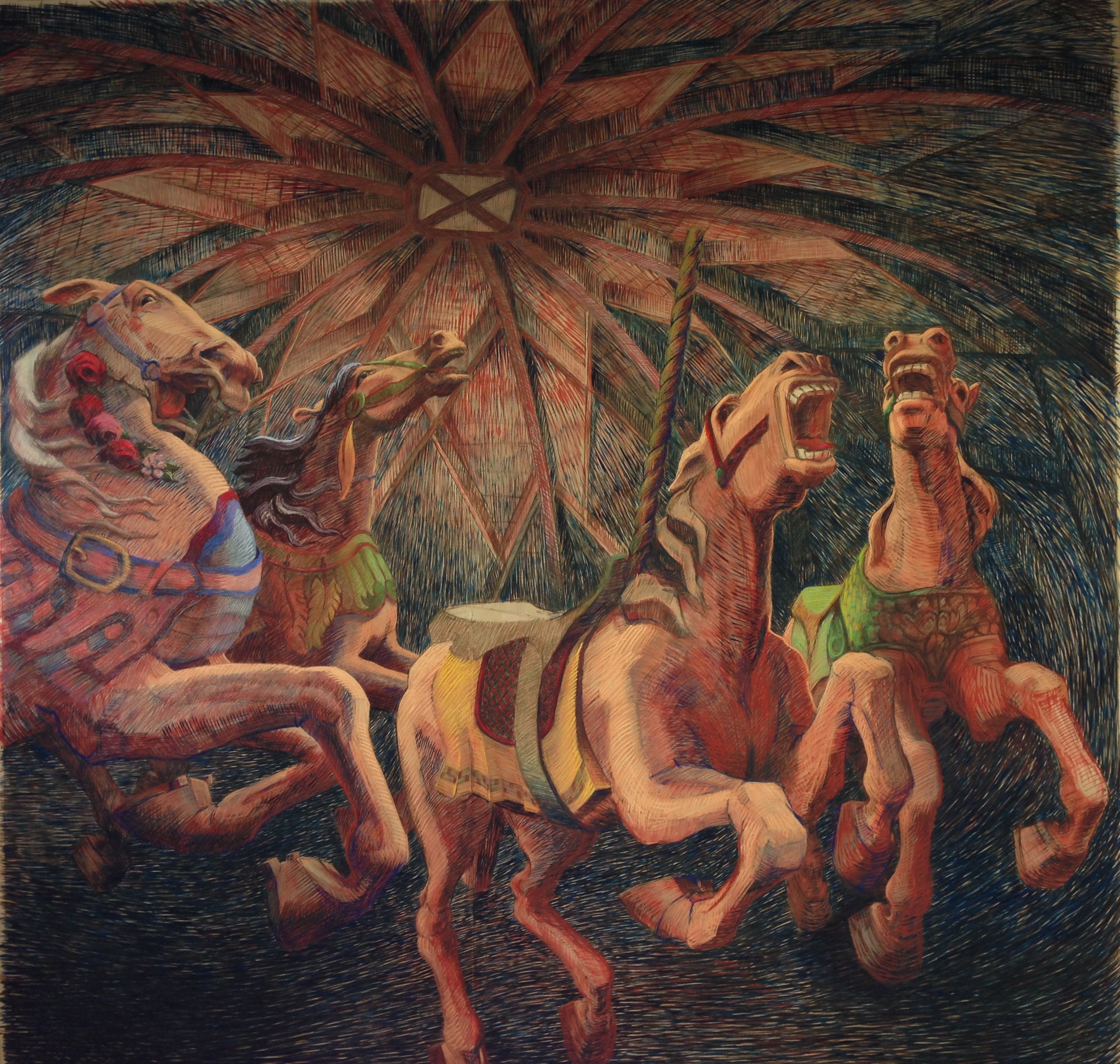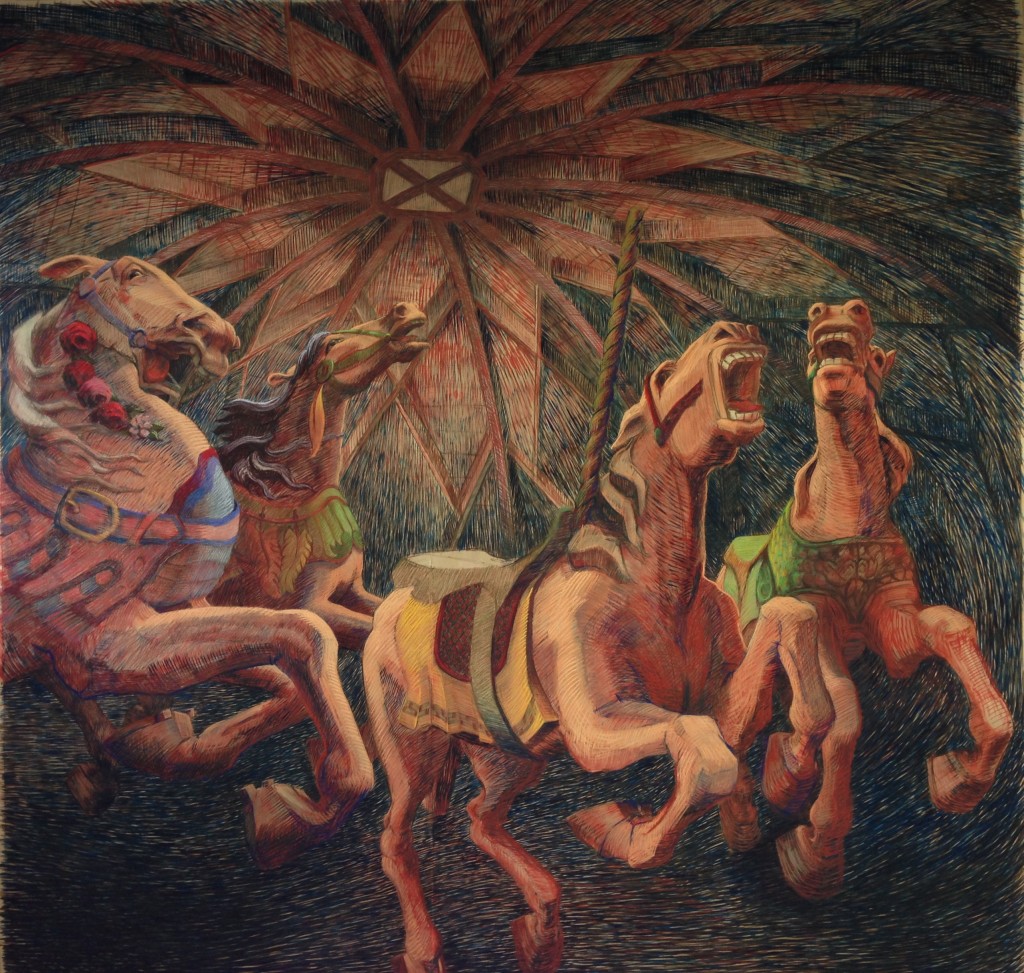
Silent Screams. Oil and pastel on paper, 2015. 90″ x 90″
This composition evolved from the lithograph of the same title. Although the horses are of a corresponding configuration (flipped in the lithograph due to the nature of printing), the architecture is used in this image to emphasize the circular motion of the carousel. The focus is on energy and movement, accentuated by mark making. The force of the horses, the futility of screams which no one hears, demands expression in a large format. These creatures emerge out of the darkness and chaos that surrounds us, moving ever forward but going nowhere.
The horses on the left side of the carousel were drawn from a 1905 Stein and Goldstein horse and a 1910 Carmel carving, from the Running Horse Studio Collection. Herschell carvings from the Santa Barbara Carousel are the basis for the horses on the right side of the image. The architecture can be found at Griffith Park in Los Angeles.
This image was awarded first place: Made in California Juried Exhibition, City of Brea Art Gallery, 2016.
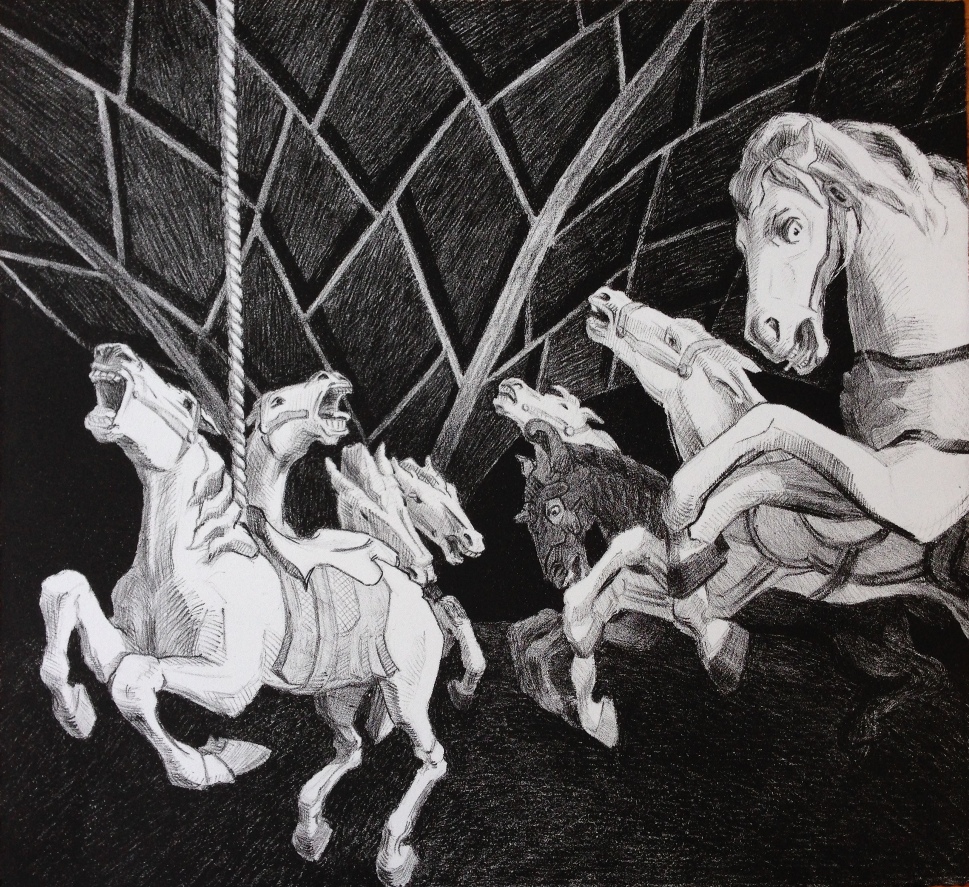
Silent Screams. Lithograph, 2015. 14″ x 15″
Inspiration for the composition was gleaned from Goya’s etching, Nor do these. The horses represented here come from two antique carousels: Griffith Park, carved mostly by The Spillman Engineering Company around 1926; and Santa Barbara, created by Herschell between 1915 and 1917. The architecture was informed by the ceiling in Griffith Park.
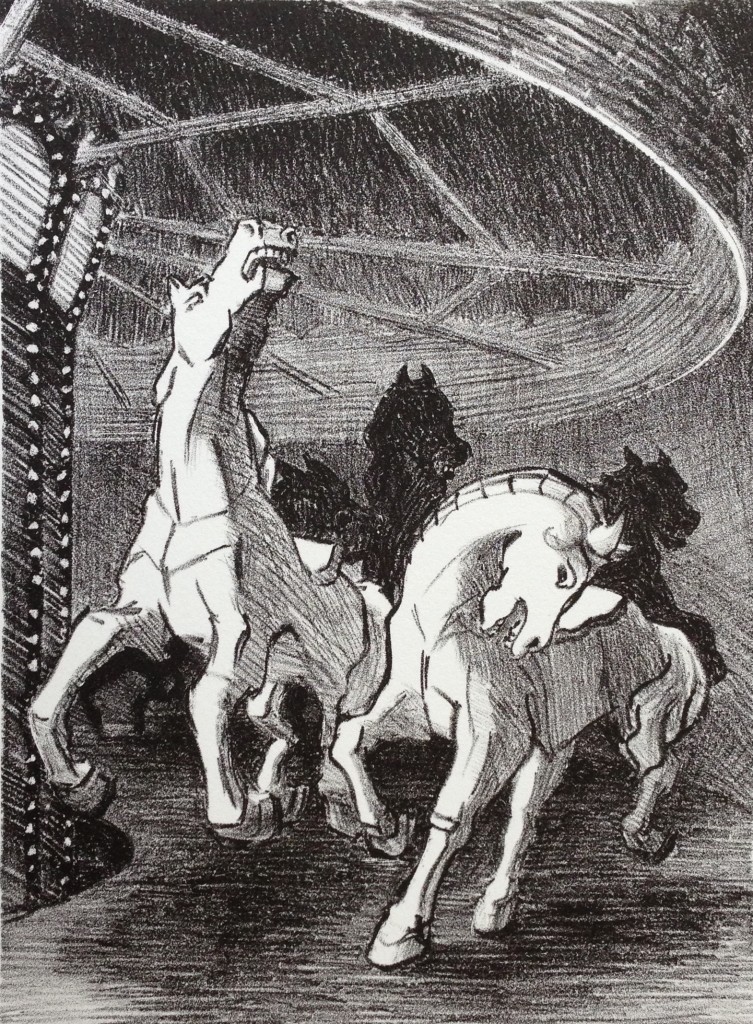
Carousel. Lithograph, 2015. 9.5″ x 7″
Derived from studies made at the Santa Monica Carousel.
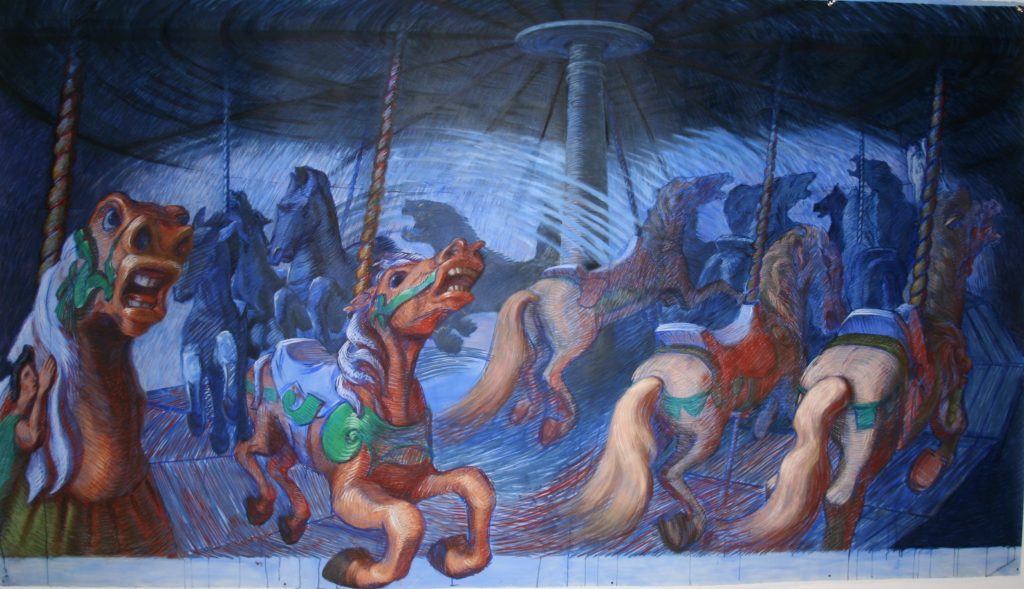
Breakout or Outbreak: Which Will It Be? Oil and Pastel, 2016. 80″ x 138″
This image was inspired while drawing for several hours as the carousel at Griffith Park spun around and up and down. Form was developed only until it began to interfere with motion. Objects were allowed to disintegrate and dissolve into one another.
Initially the bottom of the image was going to be cut off, but the dripped paint added energy. The boundary between illusion and materials blurs as the logic with which we try to construct our world falls apart.
One must consider the difference between actively breaking out of an intolerable situation, and being swept along passively by the eruption of massive discontent. Which will it be?
This painting is currently on display at the Merry Go Round Museum in Sandusky Ohio. It was also displayed at the Pasadena Museum of History, and the University Art Museum in Long Beach in 2016.
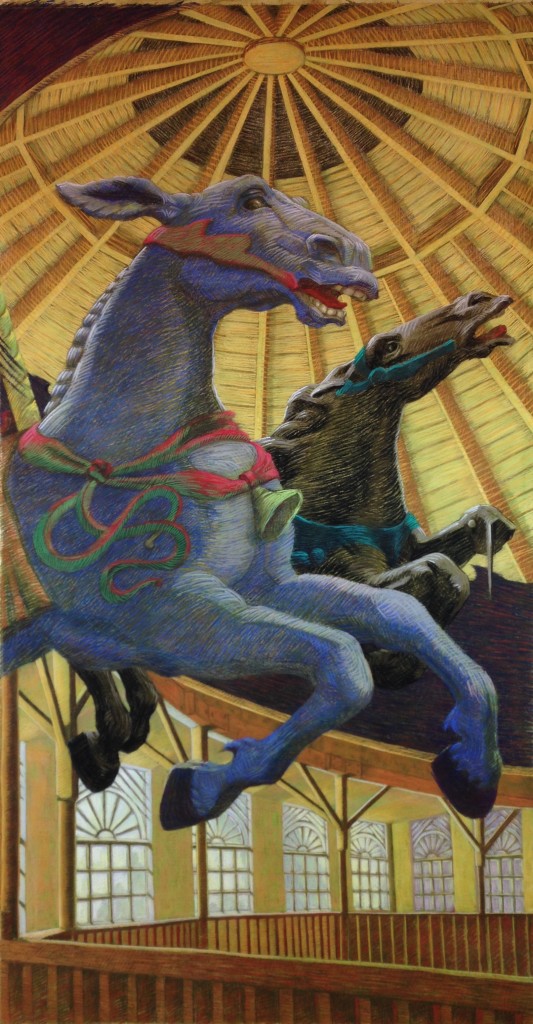
Blue Mule. Pastel, 2015. 101″ x 52″
This drawing is an oversimplification of the many lights and shadows on a carousel, which occur between competing artificial and natural lights, not to mention reflections everywhere! Cooler, darker animals in the foreground were selected against a warm background light, with a cooler natural light coming in through the windows.
The architecture was inspired by the Santa Monica Carousel and the animals were drawn from the Running Horse Studio Collection in Irwindale.
Blue Mule is currently on display at the Merry Go Round Museum in Sandusky, Ohio. It was also displayed at the Pasadena Museum of History in 2016.
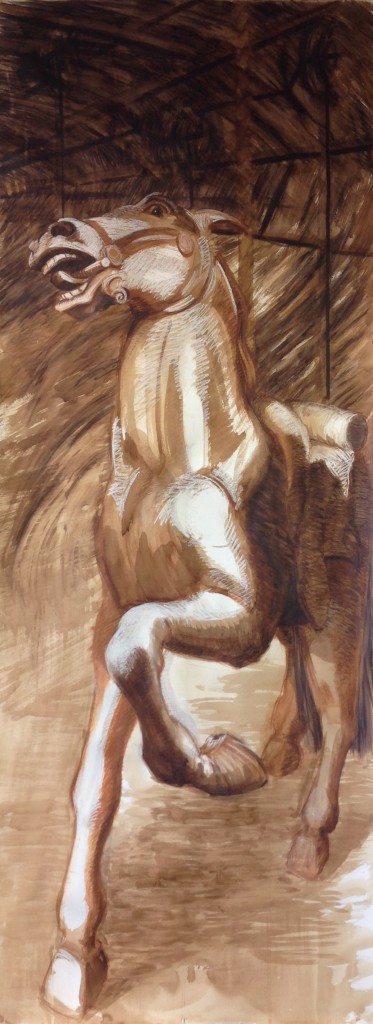
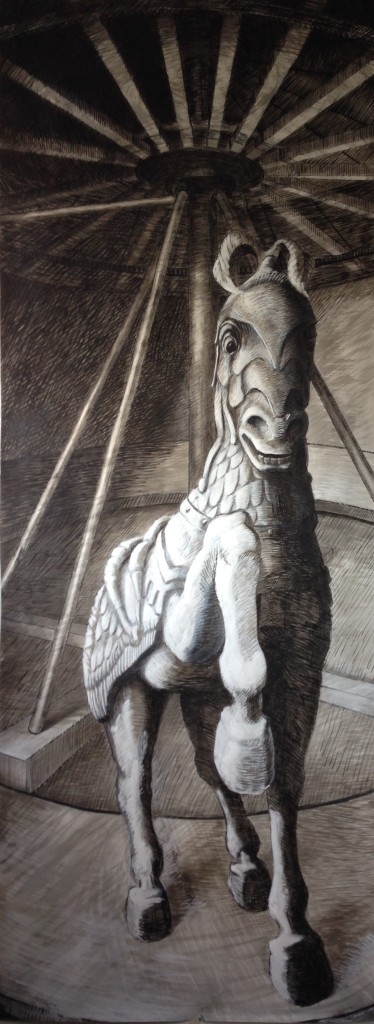
Sentry I (bottom)
Ink and Charcoal, 2015. 92″ x 35″
The value arrangement for this image was inspired by Goya’s etching,
Friend Asensi. The architecture was derived from the Santa Barbara Carousel and the horse was drawn from a carving by Spillman Engineering in the Running Horse Studio Collection.
Sentry II (top)
Water Soluble Ink and Crayon, 2015. 92″ x 35″
Drawings from the architecture at the Santa Monica Carousel and a horse carved by Muller in the Running Horse Studio Collection informed this work.
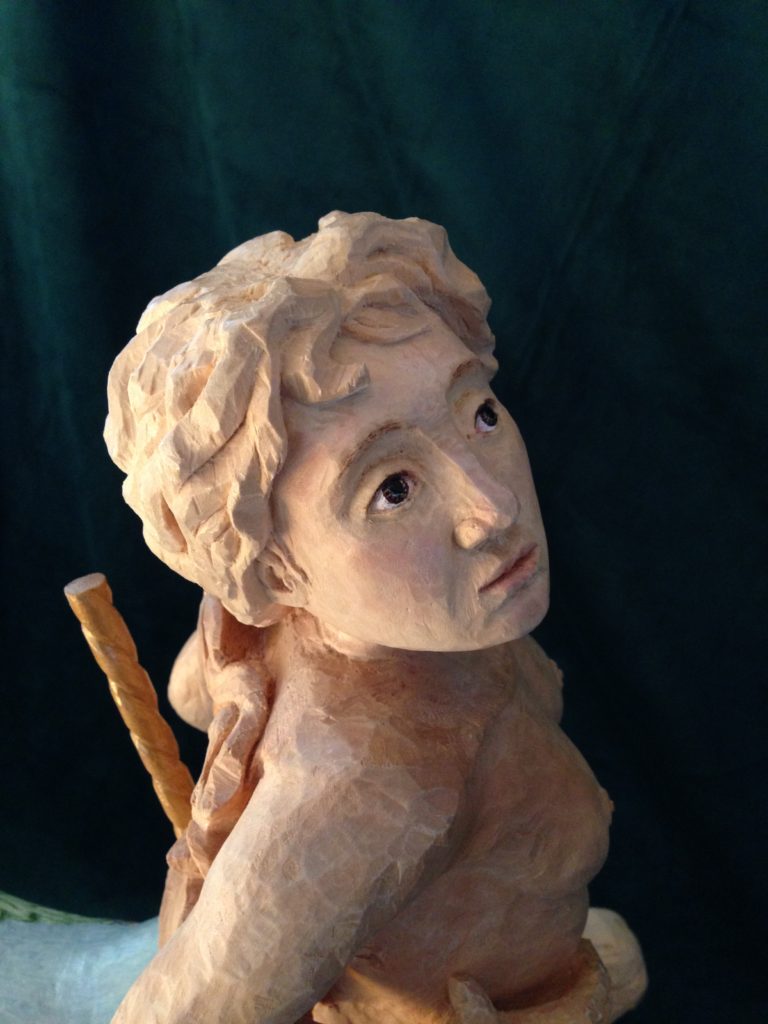
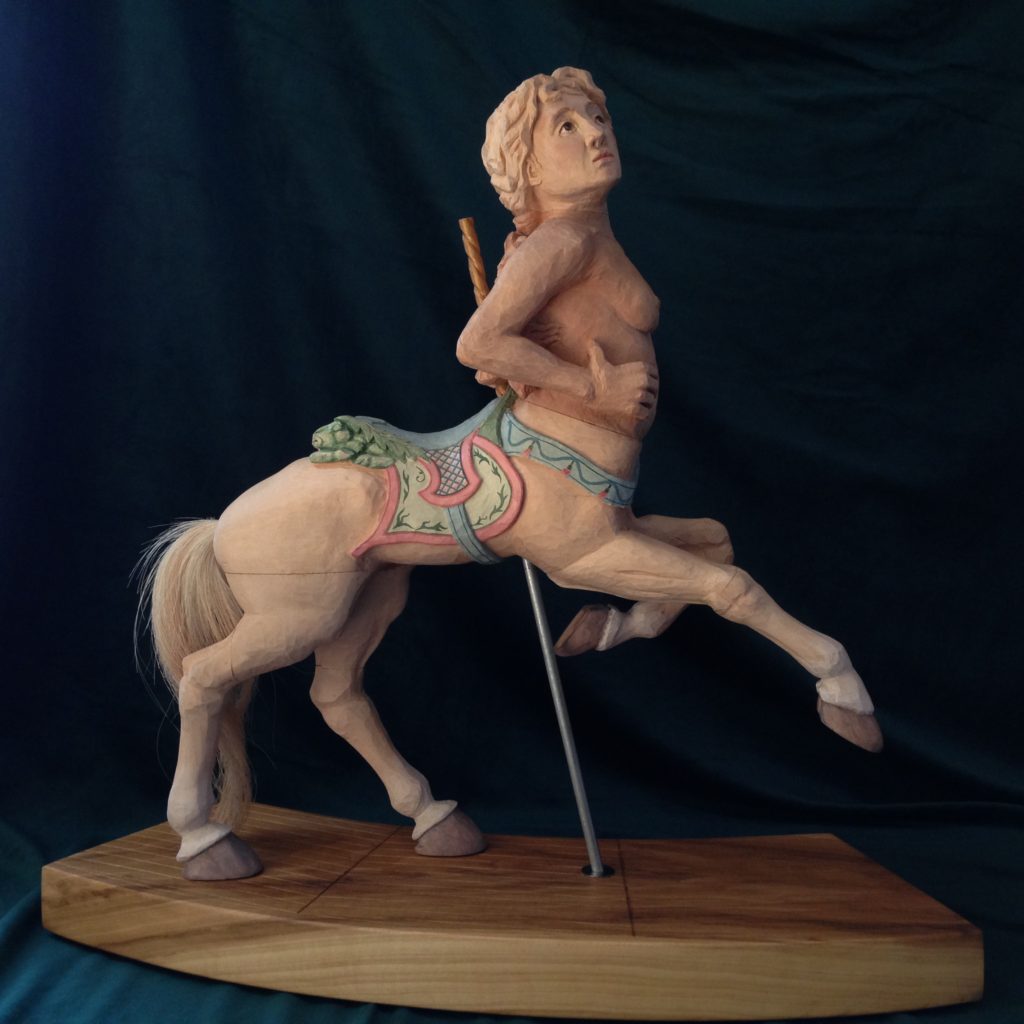
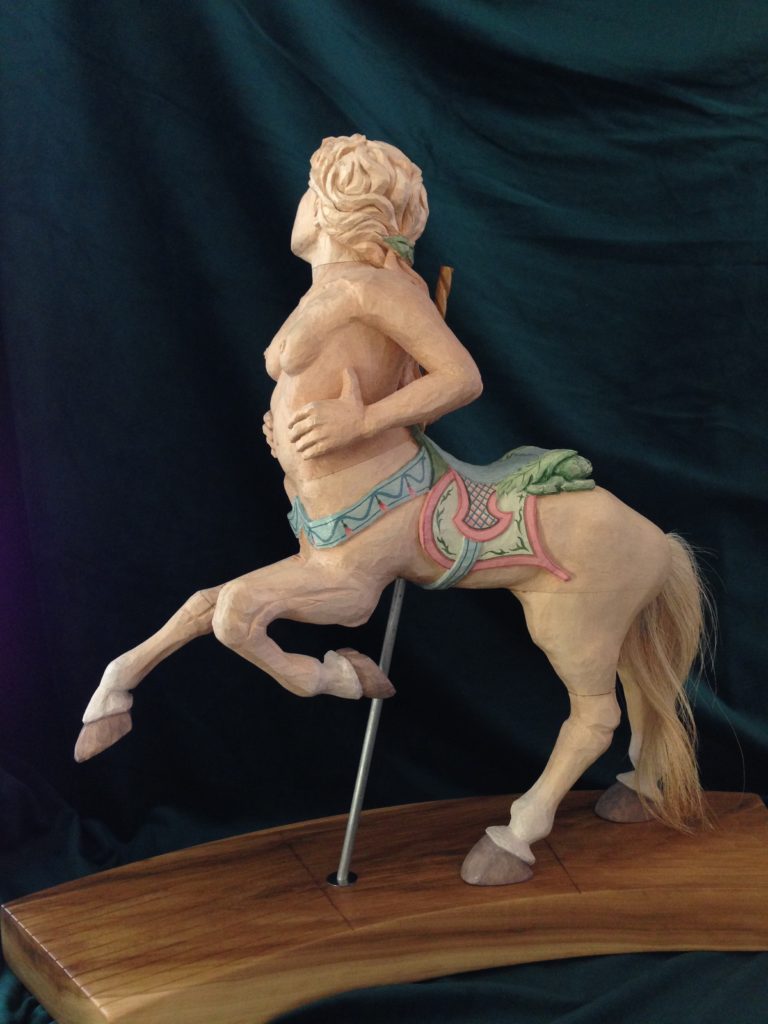
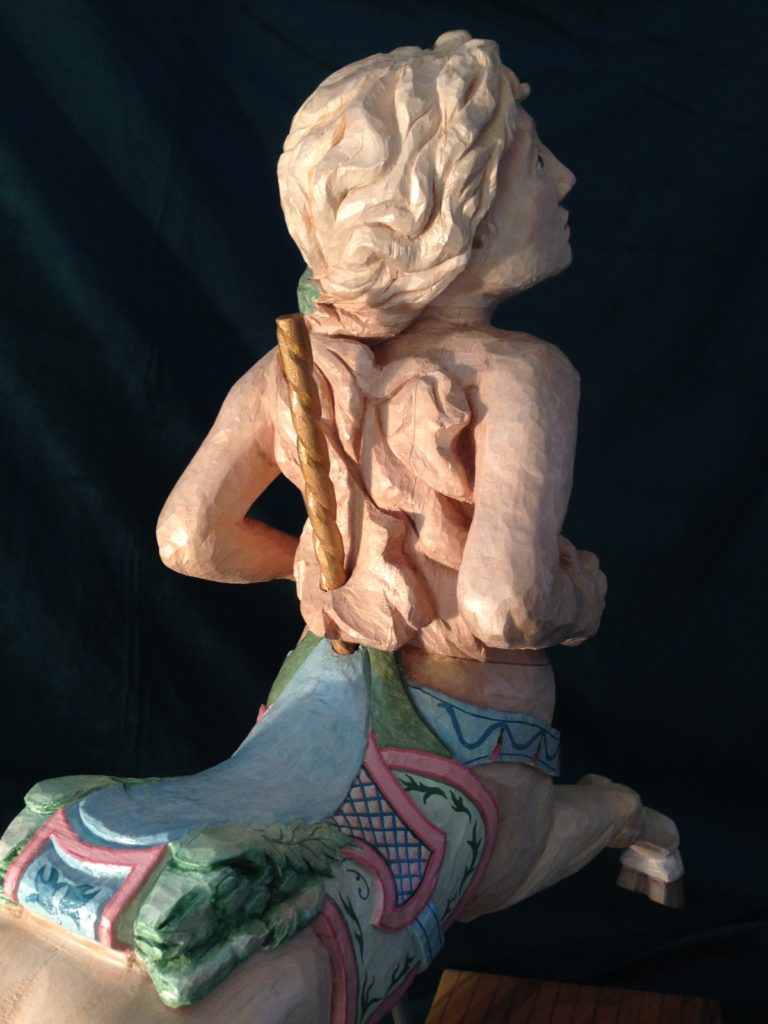
Unleashed. Basswood Carving, 2016. 22″ high, 24″ long, 8″ wide
Underlying modern religions and largely forgotten lies the Earth Mother, an embodiment of female power and fertility. Modern attempts to liberate this force have failed; like the carousel creatures she cannot experience equality and freedom when bound by the pole of convention.
The natural wood, carving marks, and joints were deliberately left exposed. Carousel animals are, after all, blocks of wood. Like Pinocchio, they take on a life of their own.
The body of the horse was modeled after an 1875 Dentzel carving from the Running Horse Studio Collection.
